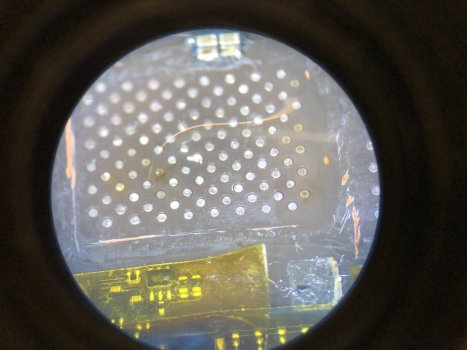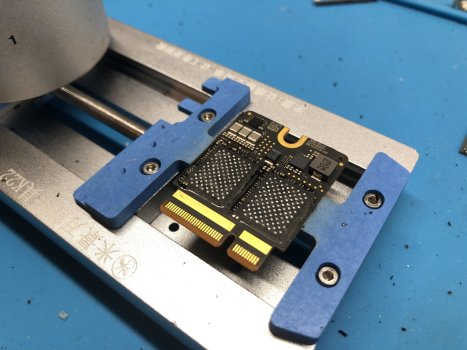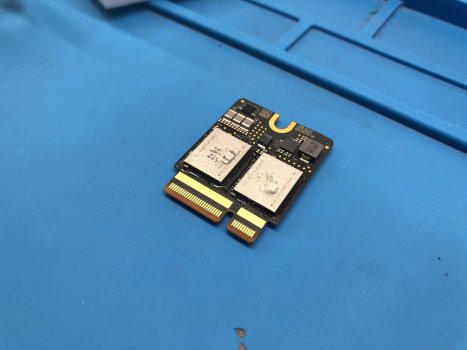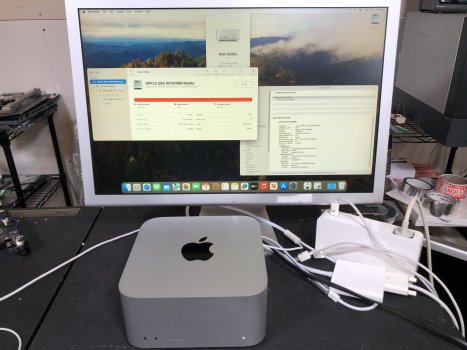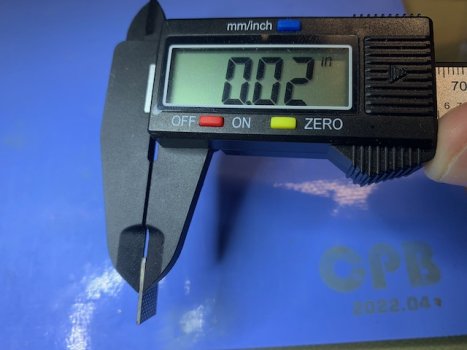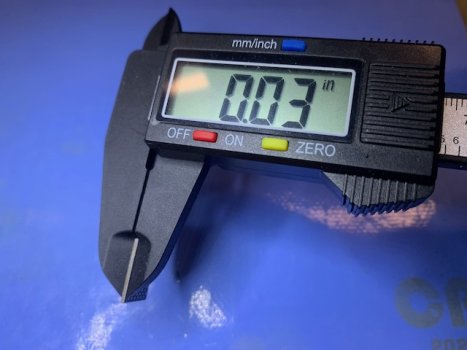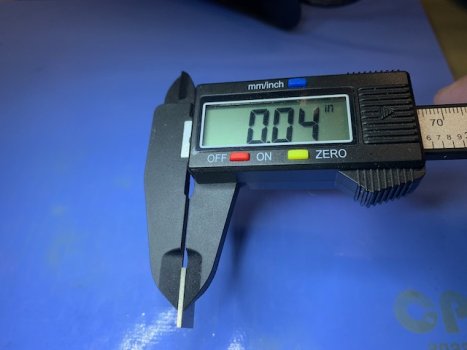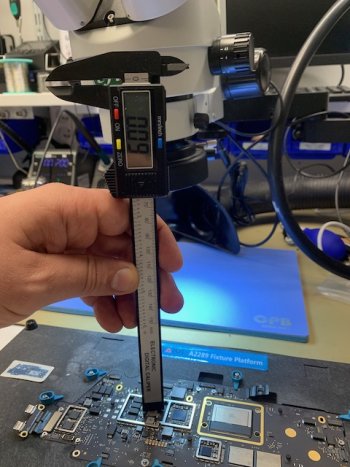The issue is not about the size of NAND chips but about a new potential replaceable NAND daughter card and associated connector. Your measurements showed that soldered chips fit onto the motherboard but we sort of already knew that already. The speculation was about using replaceable SSR mini cards like those used in the Mac Pro and Mac Studio in other Mac products
Aye as @Chuckeee said I was curious if the slotted SSD system that Apple uses on the Mac Pro and Studio could fit on the logic board or chassis of the MB Air or iPad Pro or iMac, basically where the device is thin or otherwise doesn't have a lot room. Basically do they have to solder the SSD down for those devices due to space constraints or could they use the slotted SSD modules for them despite those space constraints?
Sorry both
crazy dave and
Chuckeee for my misreading...
Are you asking if it's
technically possible to fit a daughter card system even in the iPad Pro ?
Of course the answer is yes !
Microsoft does integrate a 2230 connector and a trapdoor in the Surface Pro 11...
Apple could do the same !
The NAND systems that Apple has been using since any Intel Mac with T2 chips, and furthermore since the M1, require less space on the logic board than an M.2 SSD, whether soldered on the logic board or on a daughterboard, because it doesn't need RAM or an SSD controller.
Technically, if Apple's management had decided that it was important to build machines that could be upgraded after sale, they might well have decided to do so.
What's the difference between a soldered NAND logic board and a logic board with NAND on daughter boards?
The connector... only the connector.
A NAND daughterboard is nothing more than the components that are otherwise soldered to the motherboard, where they take up the exact same area, which, again, is less than a comparable M.2 SSD because Apple "avoids" the needs of a SSD controller and ram thanks to its SOC architecture.
Apple only uses regular PCIe data and clock signal between the Mx SOC and the NANDs, which is robust and well-known, there is no additional PCIe signal registers in the "daughterboards" models.
The Apple SSD daughterboard connector, in its current implementations from the 2017 iMac Pro through to the Mac Pro M2s, has roughly the same dimensions equivalent to an M.2 connector : around 1.2 inches by 0.4 inches.
Less than 0.5 sq in.
So what would it have costed to make all apple computers upgradable, from any Mac mini to the M2 Mac Pro, and from the MacBook air to the 16" MacBook Pro ? add 1x 0.5 sq in connector.
Thickness isn't a problem: the equivalent M.2 connectors in the PC world are 3mm thick, and the M.2 daughterboards don't protrude from the motherboard, but are simply cut out of the surface of the logic board, like it has been done in the A1708 - 2016-2017 13" MacBook Pro 2TB.
Apple just doesn't want do to it...
Let's remember that the only models for which Apple made NAND daughterboard systems are :
- the iMac Pro (2017)
- the Mac Pro (2019 and M2)
- the Mac Studio (2022 M1 and 2023 M2)
- and let's not forget the iMac 2020 20,1 and 20,2, which are a kind of Frankenstein: the 256GB to 2TB versions have only NAND soldered on the motherboard, while the 4TB and 8TB configurations use both NAND soldered on the motherboard AND 1 NAND on the daughter board...
Of all of those systems, the only two which are half-way interchangeable are the iMac Pro 2017 and the Mac Pro 2019 : the Mac Pro 2019 SSD work in the 2017 iMac Pro (the opposite isn't true).
Mac Studio M1 and M2 boards are not interchangeables (one use BGA110, the other BGA315).
The Mac Pro M2 use boards which are longer that don't fit Mac Studio M1 and M2.
All that is a total mess.
Apple doesn't care about upgradability, this is not a question for them. They build systems for them to be sold, but they don't care about upgradability.
Had Apple a real desire to make upgradeable machines, they would do so.
They could have taken 0.5 square inches out from the place taken by the touchbar (when there was one), from the speakers, or from the forcetouch trackpad, and used that surface to add 1 connector to "consumer" machines like 13" and 15" MacBook Air, iMac, and Mac mini, and made them upgradable by customer to 2TB.
But they didn't.
They could have taken 1 square inches out from the surface taken by the touchbar (when there was one), from the speakers, or from the forcetouch trackpad, and used that size to add 2 connectors to "pro" machines like 14" and 16" MacBook Pro and Mac mini Pro, and made them upgradable by customer to 8TB.
But they didn't.
They could have made a "M2-like" connector ecosystem, and sell the NAND cards at a reasonnable price.
But They didn't.
They could make any Mac Model accept any "PCIe" BGA110 or BGA315 NAND daughterboard, but they didn't.
You can only use AppleConfigurator to restore the NANDs that were an original "BOM" configuration.


